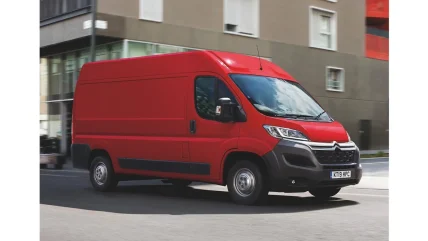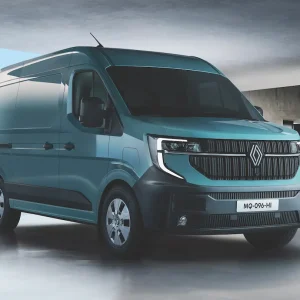
The Citroen Relay has been around for quite some time now, with surprisingly few changes. It first appeared in 1993 – called the Jumper in Europe it was the same van as a mk2 Fiat Ducato, while Citroen’s equivalent of the first Ducato was the C25. In fairness, at the time it was quite a leap forward. The new Sevel trio of Citroen Relay, Fiat Ducato and Peugeot Boxer were a revolution in terms of cab space, engine performance, standard equipment and load volumes in comparison to the outgoing Citroen C25, Fiat Ducato and Talbot Express (produced by PSA Peugeot Citroen). The range was revised heavily in 2006 and got a mid-term facelift in 2014, with a more recent revamp taking it to the new all-electric platform, just around the corner. We shall concentrate on this pre-2023 version, but, in effect, little changed throughout its whole life.
The Relay was always a big van and it still feels it today, its four-square styling may not be fashionable but it makes for good productivity. Three wheelbases of 3.0m, 3.5m and 4.0m offer a total of four overall lengths consisting of 4.95m, 5.4m and 6.0m on the three respective wheelbase dimensions, with a further L4 version at 6.4m created by a greater rear overhang on the 4.0m wheelbase. Overall heights are 2.25m, 2.5m and 2.75m with an exterior width of 2.5m (2.05m with mirrors folded) across all models. Naturally, this leads to a multitude of load bay dimensions with internal lengths ranging from 2.7m, through 3.1m and 3.7m with each wheelbase and 4.1m at maximum. Internal heights are 1.6m, 1.95m and 2.15m, with seven different load volumes (the L3H3 and L4H2 equate to the same) ranging from 8.0m3 through to 17m3. Usually such myriad length and height combination would impact the payload but the 3.5t GVM Relay can muster from 1,120kg to 1,570kg while the 4.0t derivative can carry 300kg more than that. Nothing outdated there.
The same cannot be said of the cab and the general driving experience, for it is here where the Relay feels the age of its design most vividly. The cab is spacious – the big door bins and plenty of oddments space mean it’s a good on-site van, even for a crew of three. On the road it’s noisy by comparison to more recent rivals – the gearchange, steering, brakes and ride comfort, laden or empty, cannot match a Transit or Sprinter-Crafter/LT.
Basic ‘X’ versions get height-adjustable driver’s seat, and steering wheel, (excellent) twin-element door mirrors, electric windows and a single side loading door. The Worker model added cruise control, driver’s seat adjustable lumbar support and armrest enhanced traction control with hill descent mode and the option of all-season tyres. The best-of-the-bunch Enterprise derivative had air conditioning, rear parking sensors, touchscreen and satellite navigation up for grabs, while the optimistically labelled Driver model offered a rear camera and LED headlights.
The Relay might be showing its age now but if you buy it for its core values you won’t be disappointed. The 2.2 HDi engine produces a lowly 120hp or passable 140hp – albeit with decent torque and economy – but the low mileages of our used examples tell their own tale. This is a big van for taking lots of kit to site, not munching motorway mileages. Bear that one fundamental aspect in mind and it’s a decent used buy.
Plus points
1) Great size and volume choice
2) Spacious cab
3) Good payload
Minus points
1) Uncomfortable and unrefined
2) Avoid the 120hp version
3) Most models lack kit
Second-hand buys
|
Version |
Plate |
Year |
Mileage |
Price ex.VAT |
|
2.2HDi 140bhp L3H2 |
69 |
2019 |
22,100 |
£19,995 |
|
2.2HDi 140bhp L2H2 |
70 |
2020 |
30,200 |
£21,295 |
|
22.2HDi 140bhp L2H2 |
21 |
2021 |
23,200 |
£23,995 |
|
2.2HDi 140bhp L3H2 |
22 |
2022 |
6,000 |
£29,995 |
|
2.2HDi 140bhp L2H2 |
23 |
2023 |
100 |
£30,895 |





